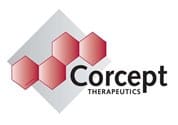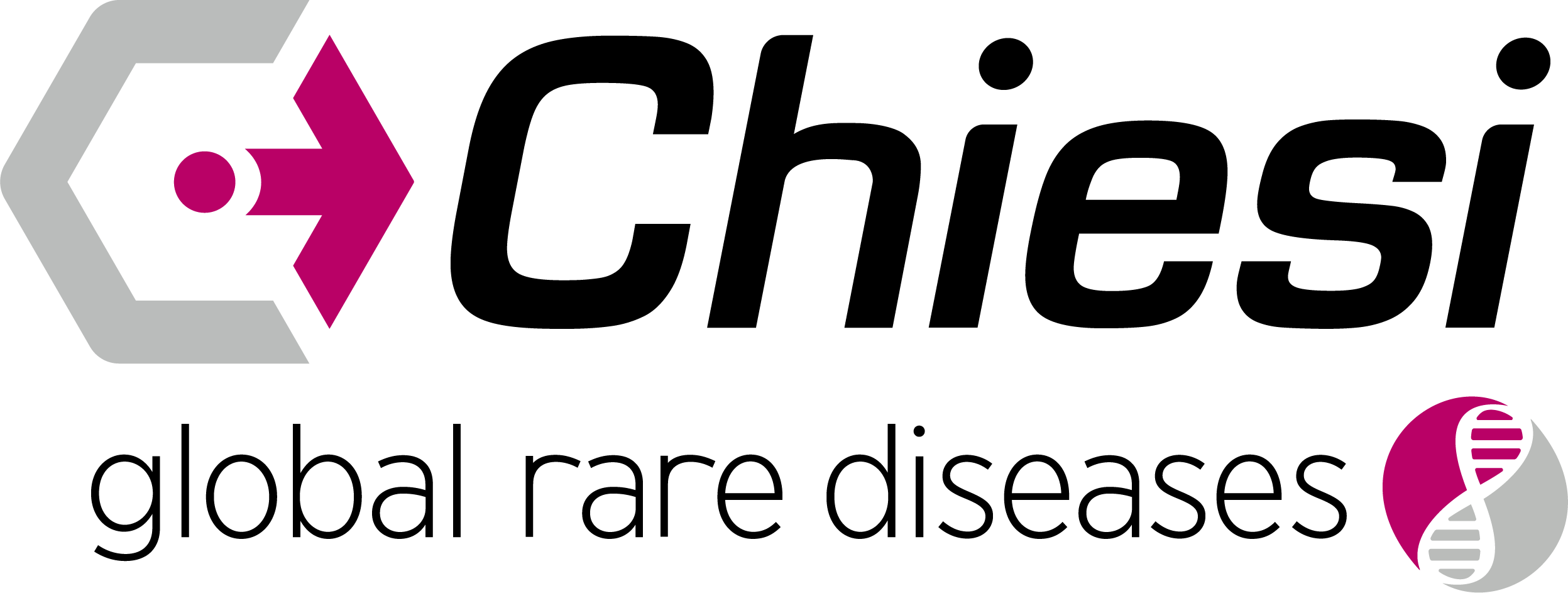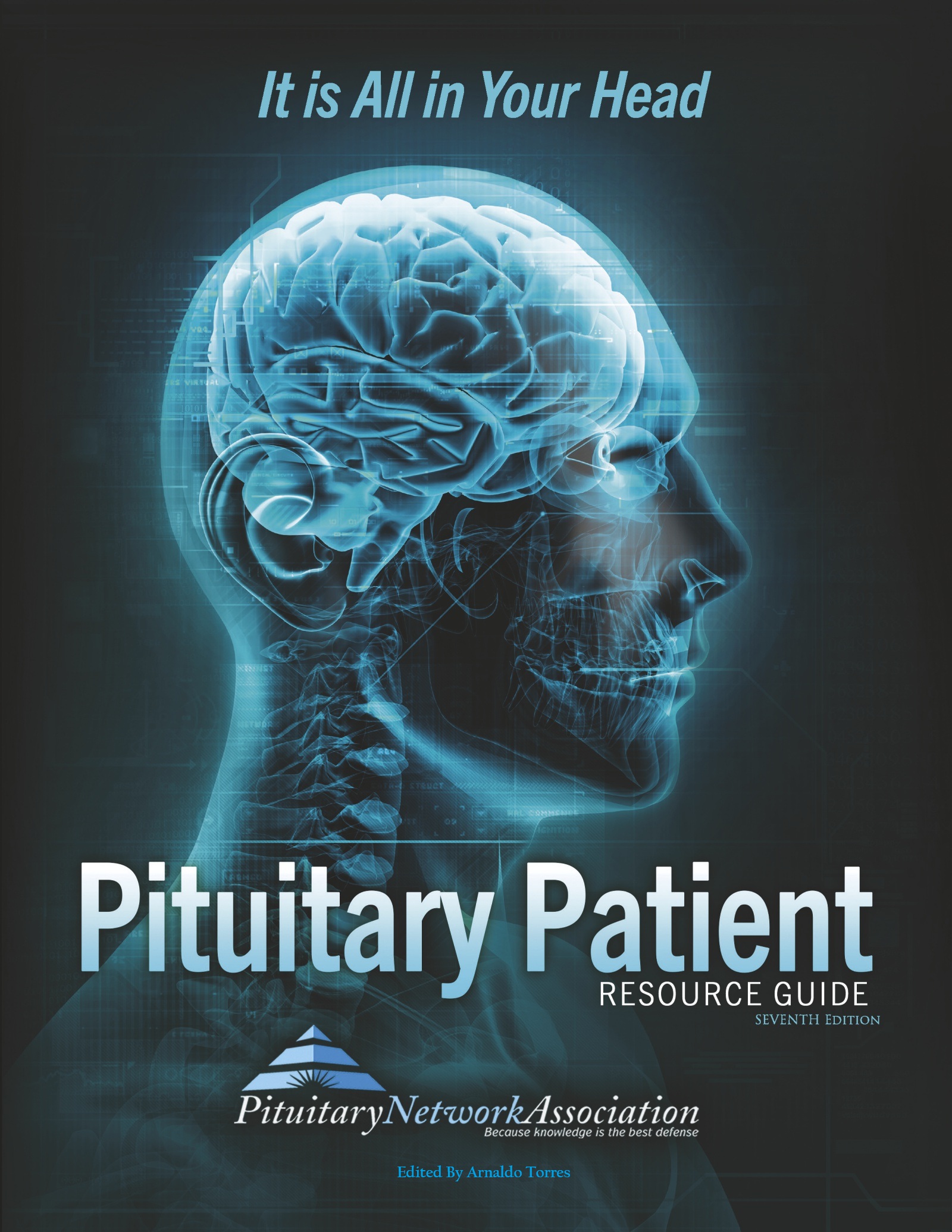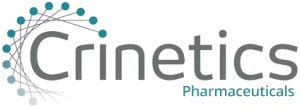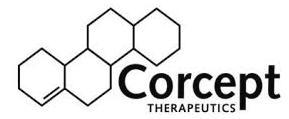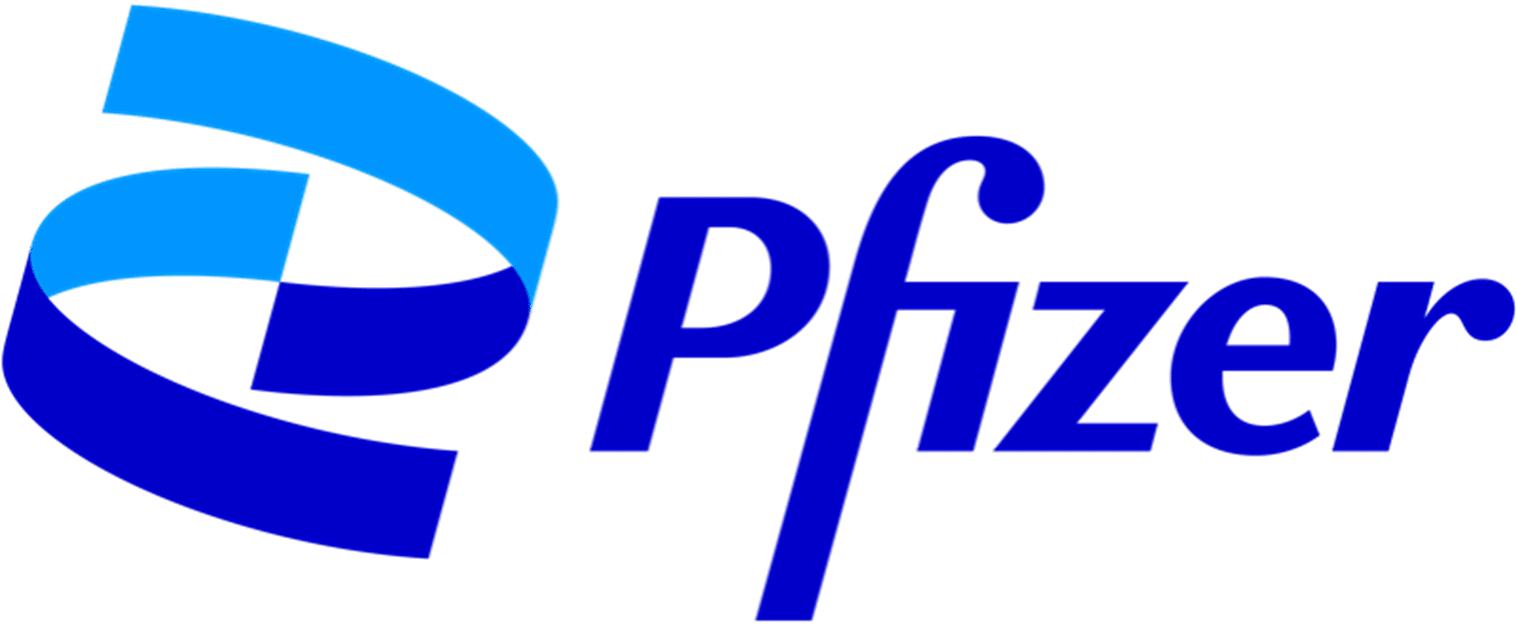News Articles February 2022
Written on 04 February 2022.
News Articles November 2022
Myths about Low Testosterone
An article from the Cleveland Clinic knocks down myths about low testosterone and the role of masturbation, vasectomy, soy, smoking and more.
https://health.clevelandclinic.org/causes-of-low-testosterone-myths-and-truths/
Summer Camp Inspires Hope in Children with Pituitary Tumor, Cancer
An article in the Times of New Zealand explores a summer camp that specializes in campers with cancer, a pituitary tumor, or other medical conditions. Read more: https://www.times.co.nz/news/camp-quality-inspiring-for-kids/
Rare Case of Woman Who Developed Hypophysitis After Covid-19 Vaccine
An article in new-medical.net looks at the case of a woman with central diabetes who received the SARS-CoV-2 vaccine and three days later developed hypophysitis caused by pituitary stalk thickening. Read more:
Pituitary Journey: Doctors Discover Pituitary Tumor after Woman Goes Up 7 Bra Sizes
An article in the Liverpool Echo tells the story of Linda Ellis, who went in requesting breast reduction surgery and discovered she had a pituitary tumor. Read more: https://www.liverpoolecho.co.uk/news/liverpool-news/mums-life-at-risk-after-25187097
PNA Medical Corner: Pituitary Surgical Technique
PNA Medical Corner: Pituitary Surgical Technique
This month the PNA Medical Corner showcases a study co-authored by three members of the PNA: Drs. Susan Samson, Kaisorn Chaichana and Alfredo Quinones-Hinojosa of the Mayo Clinic in Jacksonville, Florida. The study found that endoscopic endonasal resection of the medial wall fo the cavernous sinus is associated with better hormonal control later on, but requires advanced surgical skill.
Endoscopic Endonasal Resection of the Medial Wall of the Cavernous Sinus and Its Impact on Outcomes of Pituitary Surgery: A Systematic Review and Meta-Analysis
Leonardo J M de Macêdo Filho 1 2, Ana Vitória G Diógenes 1, Esther G Barreto 1, Bhavya Pahwa 3, Susan L Samson 2 4, Kaisorn Chaichana 2, Alfredo Quinones-Hinojosa 2, Joao Paulo Almeida 2 Affiliations expand
- PMID: 36291288 DOI: 3390/brainsci12101354
Abstract
Introduction: Pituitary adenomas have the potential to infiltrate the dura mater, skull, and the venous sinuses. Tumor extension into the cavernous sinus is often observed in pituitary adenomas and techniques and results of surgery in this region are vastly discussed in the literature. Infiltration of parasellar dura and its impact for pituitary surgery outcomes is significantly less studied but recent studies have suggested a role of endoscopic resection of the medial wall of the cavernous sinus, in selected cases. In this study, we discuss the techniques and outcomes of recently proposed techniques for selective resection of the medial wall of the cavernous sinus in endoscopic pituitary surgery.
Methods: We performed a systematic review of the literature using the Preferred Reporting Items for Systematic Reviews and Meta-Analyses (PRISMA) guidelines and protocol and a total of 4 studies with 106 patients that underwent an endoscopic approach for resection of pituitary tumors with resection of medial wall from cavernous sinus were included. Clinical and radiological data were extracted (sex, mean age, Knosp, prior surgery, tumor size and type, complication rate, and remission) and a meta-analysis using the RevMan 5.4 software was performed.
Results: A total of 5 studies with 208 patients were included in this analysis. The mean age of the study population was 48.87 years (range 25-82) with a female/male ratio of 1:1.36. Majority of the patients had Knosp Grade 1 (n = 77, 37.02%) and Grade 2 (n = 53, 25.48%). The complication rate was 4.81% (n = 33/106) and the most common complication observed was a new transient CN dysfunction and diplopia. Early disease remission was observed in 94.69% of the patients (n = 196/207). The prevalence rate of CS medial wall invasion varied from 10.4 % up to 36.7%. This invasion rate increased in frequency with higher Knosp Grade. The forest plot of persistent disease vs. remission in this surgery approach showed a p < 0.00001 and heterogeneity (I^2 = 0%).
Discussion: Techniques to achieve resection of the medial wall of the cavernous sinus via the endoscopic endonasal approach include the “anterior to posterior” technique (opening of the anterior wall of the cavernous sinus) and the “medial to lateral” technique (opening of the inferior intercavernous sinus and). Although potentially related with improved endocrinological outcomes, these are advanced surgical techniques and require extensive anatomical knowledge and extensive surgical experience. Furthermore, to avoid procedure complications, extensive study of the patient’s configuration of cavernous ICA, Doppler-guided intraoperative imaging, surgical navigation system, and blunt tip knives to dissect the ICA’s plane are recommended.
Conclusion: Endoscopic resection of the medial wall of the cavernous sinus has been associated with reports of high rates of postoperative hormonal control in functioning pituitary adenomas. However, it represents a more complex approach and requires advanced experience in endoscopic skull base surgery. Additional studies addressing case selection and studies evaluating long term results of this technique are still necessary.
Keywords: cavernous sinus; endoscopic; medial wall resection; neurosurgery; pituitary adenomas.

Dr. Susan Samson
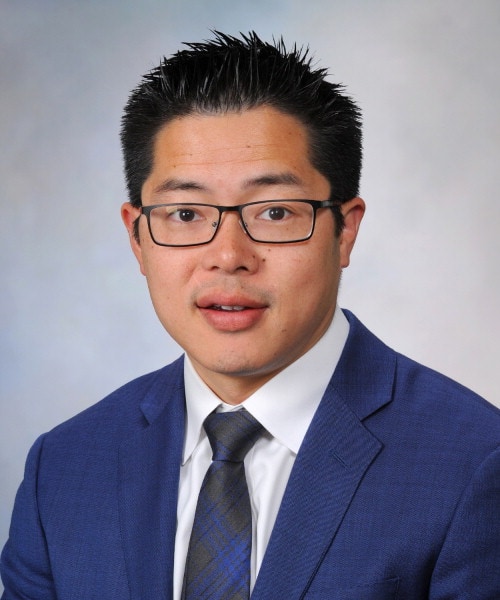
Dr. Kaisorn Chaichana

Dr. Alfredo Quinones-Hinojosa
PNA Medical Corner: Minimally Invasive Endoscopic Surgery

This month the PNA Medical corner spotlights a study co-authored by a member of the PNA, Dr. James J Evans. The study found that endoscopic surgery is effective and minimally invasive for children with skull base pathologies like pituitary tumors.
Link: https://pubmed.ncbi.nlm.nih.gov/36206699/
Minimally invasive endoscopic approaches to pediatric skull base pathologies
Siyuan Yu 1, Michael Karsy 2, Giyapuram N Prashant 2, Blair Barton 3, Marc R Rosen 4, William Parkes 5, James J Evans 4
PMID: 36206699 DOI: 10.1016/j.ijporl.2022.111332
Abstract
Objective: Endoscopic endonasal approaches to pediatric skull base lesions are rare, challenging, and present distinct considerations from adult pathology. In this study, we describe our endoscopic technical approach to various skull base lesions demonstrating the efficacy and nuances of these approaches in pediatric patients.
Methods: Pediatric patients underwent endoscopic approach for skull base lesions from January of 2015 to April of 2021 were included in the study. Presenting symptoms, indications for surgery, surgical outcomes, intraoperative and postoperative complications, length of hospital stay, and length of follow-up were documented.
Results: A total of 18 patients (median age 12, age-range 1-15, 53% male) underwent 19 endoscopic transsphenoidal procedures. The pathologies included craniopharyngioma (N = 5), biopsy for an unknown disease (n = 2; orbital meningioma and pituitary lymphocytic hypophysitis), pituitary adenoma (N = 2; ACTH-secreting and non-functional), Rathke’s cleft cyst (n = 2), CSF leak repairs (n = 2; post-traumatic and spontaneous meningocele), juvenile nasopharyngeal angiofibroma (n = 3, 1 patient had 2 procedures) and rhabdomyosarcoma (n = 1). GTR was achieved in 11 out of 15 procedures (73.3%). Out of 10 patients with a sellar lesion, 6 patients had intraoperative CSF leak (60%). No patients experienced post-operative CSF leak. The median follow-up for all patients was 14 months (1-36 months).
Conclusion: Anterior and middle skull base pathology in pediatric patients can be effectively operated via an endoscopic approach across a wide variety of patient ages and conditions. Minimally invasive techniques with middle turbinate and nasal septum preservation can be achieved without compromising outcomes. A wide variety of surgical repair strategies can be successfully utilized.
Keywords: Endoscopic; Middle turbinate preservation; Pediatric skull base; Transsphenoidal surgery.
Copyright © 2022. Published by Elsevier B.V.
PNA Spotlight: Dr. Ravi H. Gandhi
 This month the PNA spotlight shines on Dr. Ravi H. Gandhi, neurosurgeon at AdventHealth Neuroscience Institute of Orlando Neurosurgery – Winter Park where he serves as Medical Director. Dr. Gandhi attended Johns Hopkins University from 1998-2001 and Saint George’s University School of Medicine from 2002-2006, His Internship, Residency, and Fellowship was at Albany Medical Center from 2006-2013. Dr. Gandhi’s profile can be seen here. He is certified by the American Board of Neurological Surgery. Dr. Gandhi answered some questions from the PNA. Here are his answers.
This month the PNA spotlight shines on Dr. Ravi H. Gandhi, neurosurgeon at AdventHealth Neuroscience Institute of Orlando Neurosurgery – Winter Park where he serves as Medical Director. Dr. Gandhi attended Johns Hopkins University from 1998-2001 and Saint George’s University School of Medicine from 2002-2006, His Internship, Residency, and Fellowship was at Albany Medical Center from 2006-2013. Dr. Gandhi’s profile can be seen here. He is certified by the American Board of Neurological Surgery. Dr. Gandhi answered some questions from the PNA. Here are his answers.
What inspired you to choose your career path?
In fourth grade, my grandfather passed away from a stroke. As long as I could remember my grandfather he had had process on half of his body. I thought same time I read a fictional book which included a neurosurgeon as a character. It was at that time that I knew that I could help people That might end up with the same type of suffering that my grandfather had had. As time progressed, I learned more and more about what Neurosurgeon’s did. I sought out every neurosurgeon I could you know elementary school to shadow them to pick their brains.
I never gave up on this dream throughout my school then college and then medical school. The more I learned about Neurosurgery the more I realize that I wanted to be amongst the ranks of Not just neurosurgeons but amongst the ranks of the best neurosurgeons
What is the primary focus of your work/research?
I specialize in minimally traditional and minimally invasive methods of treating complex brain and skull base diseases. I am a board-certified neurosurgeon who is fellowship trained in Cerebrovascular, Endovascular, and Skull Base Neurosurgery. My current areas of interest include traditional and minimally invasive methods of treating complex brain and skull base diseases such as Interiors skull base Tumors such as Pituitary Tumor’s, brain tumors, trigeminal
neuralgia, and acoustic neuromas (vestibular schwannomas). I also treat cerebrovascular disorders of the brain and spine including aneurysms, arteriovenous malformations(avm), and carotid and verterbral artery stenosis predominantly minimally invasively with no incision.
What do you consider to be the future of your field?
Modern neurosurgery is a relatively young field of medicine. My expectation of our field in the future is that there will be more advances in surgical technology with better tools for Visualization Which would enable more minimally invasive approaches.
There will be more advances in neuro-oncology and fewer Brain tumors will require surgery.
What should patients know about your field/what deserves more recognition/awareness?
This is a difficult question to answer because there are so many facets to Neurosurgery. Patient should recognize that there are multiple subspecialties within Neurosurgery and seeking out care from people who specialize in your specific disease helps improve the success of your treatment.
In general, many tumors that we treat Are diagnosed very late in the course as the symptoms are often not recognized. This problem is getting better as access to MRI is improving.
What would you like to convey about yourself to your patients?
I only operate on family members. That is I consider every patient as I would a family member. I am tied to the success of each outcome as I would be for a family member.
I do not consider our practice of Neurosurgery to be a business. I am lucky to be part of a group of neurosurgeons who practice expert level neurosurgery in all subspecialties of neurosurgery and treat patients with the utmost in compassion.
Why did you get involved with the PNA; what is the extent of your involvement.
I have been an PNA member since 2018 having been inspired by their mission to disseminate information helpful to the medical community, the public and to pituitary patients and their families on matters regarding early detection, symptoms, treatments, and resources available to patients with pituitary disease.
PNA Highlights October 2022

A wise man should consider that health is the greatest of human blessings, and learn how by his own thought to derive benefit from his illnesses.
-Hippocrates
PNA Spotlight: Dr. Ravi H. Gandhi
This month the PNA spotlight shines on Dr. Ravi H. Gandhi, neurosurgeon at AdventHealth Neuroscience Institute of Orlando Neurosurgery – Winter Park where he serves as Medical Director. Dr. Gandhi attended Johns Hopkins University from 1998-2001 and Saint George’s University School of Medicine from 2002-2006, His Internship, Residency, and Fellowship was at Albany Medical Center from 2006-2013. Dr. Gandhi’s profile can be seen here. He is certified by the American Board of Neurological Surgery. Dr. Gandhi answered some questions from the PNA. Here are his answers.

PNA Medical Corner: Minimally Invasive Endoscopic Surgery
This month the PNA Medical corner spotlights a study co-authored by a member of the PNA, Dr. James J Evans. The study found that endoscopic surgery is effective and minimally invasive for children with skull base pathologies like pituitary tumors.
Link: https://pubmed.ncbi.nlm.nih.gov/36206699/
Minimally invasive endoscopic approaches to pediatric skull base pathologies
Siyuan Yu 1, Michael Karsy 2, Giyapuram N Prashant 2, Blair Barton 3, Marc R Rosen 4, William Parkes 5, James J Evans 4

Magnolia
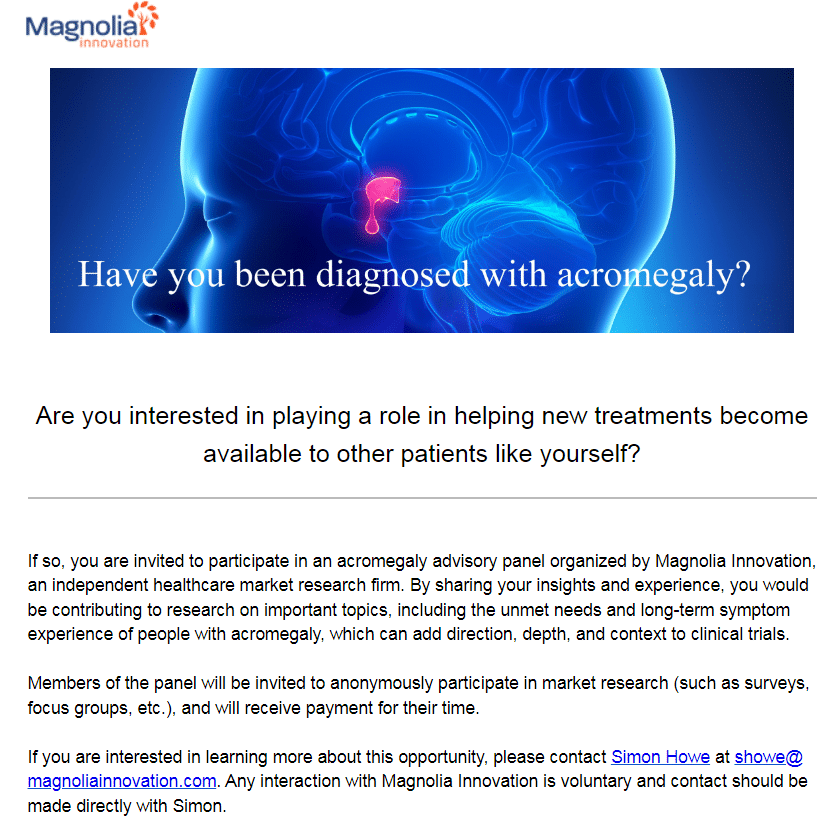
PATHFNDR
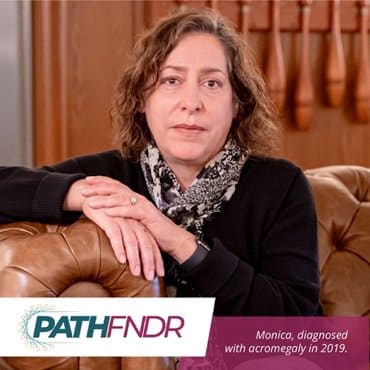
Investigational Studies to Evaluate the Safety and Efficacy of Paltusotine in Patients with Acromegaly
The PATHFNDR studies are recruiting patients to participate in clinical research for once-daily paltusotine for the treatment of acromegaly. If the studies are successful, paltusotine could be approved as a ONCE-DAILY, ORAL treatment option that gives patients an alternative to injections or twice-daily oral medications.
As a study participant, you could play an important role in advancing the options available for acromegaly treatment for yourself and many others living with this rare disease.
ABOUT THE STUDIES
The purpose of the PATHFNDR studies is to see if Crinetics Pharmaceutical's investigational medication, paltusotine, is safe and effective in patients with acromegaly.
PATHFNDR-1 is a randomized, placebo-controlled study designed to evaluate the safety and efficacy of paltusotine in
subjects with acromegaly treated with somatostatin receptor ligand (SRL) based treatment regimens. Clinicaltrials.gov
PATHFNDR-2 is a randomized, placebo-controlled study designed to evaluate the safety and efficacy of paltusotine in
subjects with non-pharmacologically treated acromegaly. Clinicaltrials.gov
1(855) 848-8486
Copyright © 2024 Pituitary Network Association All rights reserved.
Disclaimer: PNA does not engage in the practice of medicine. It is not a medical authority, nor does it claim to have medical expertise. In all cases, PNA recommends that you consult your own physician regarding any course of treatment or medication.
Our mailing address is:
Pituitary Network Association
P.O. Box 1958
Thousand Oaks, CA 91358
(805) 499-9973 Phone - (805) 480-0633 Fax
Email [email protected]
You are receiving this Newsletter because you have shown interest in receiving information about our activities.
If you do not want to receive any more emails from PNA, Unsubscribe.
News Articles October 2022
Can Yoga Help with PCOS?
An article in Indian Express explores the role of yoga in helping treat PCOS (polycystic ovarian syndrome). Read more here:
COVID Vaccine and Menstruation
An article in SHAPE looks at a new study from the National Institutes of Health about the link between the COVID vaccine and duration of menstrual cycles. Read more here:
Mental Health and Your Hormones
A new article looks at the role of hormones in human mental health. Read more:
New Scoring System Predicts Surgery Outcome for Giant Pituitary Adenoma
An article in Cureus.com discusses a new scoring system called AGPA developed by researchers at Aga Khan University in Pakistan to predict the outcome of surgery for giant pituitary adenoma. Read more:
Cushing’s Disease Linked to Ocular Hypertension
An article in Docwirenews looks at a study that found that Cushing’s patients are at higher risk of ocular hypertension. Read more:
Can I Receive Treatment Or A Referral To A Practitioner From NCCAM?
NCCAM is the Federal Government’s lead agency for scientific research on CAM. NCCAM does not provide CAM therapies or referrals to practitioners.
How Can I Determine Whether Statements Made About The Effectiveness Of A CAM Therapy Are True?
Statements that manufacturers and providers of CAM therapies may make about the effectiveness of a therapy and its other benefits can sound reasonable and promising. However, they may or may not be backed up by scientific evidence. Before you begin using a CAM treatment, it is a good idea to ask the following questions:
- Is there scientific evidence (not just personal stories) to back up the statements? Ask the manufacturer or the practitioner for scientific articles or the results of studies. They should be willing to share this information, if it exists.
- Does the Federal Government have anything to report about the therapy?
- Visit the FDA online at www.fda.gov to see if there is any information available about the product or practice. Information specifically about dietary supplements can be found on FDA’s Center for Food Safety and Applied Nutrition Web site at www.fda.gov/Food/DietarySupplements/default.htm. Or visit the FDA’s Web page on recalls and safety alerts at www.fda.gov/opacom/7alerts.html.
- Check with the Federal Trade Commission (FTC) at www.ftc.gov to see if there are any fraudulent claims or consumer alerts regarding the therapy. Visit the Diet, Health, and Fitness Consumer Information Web site at www.consumer.ftc.gov/topics/health-fitness.
- Visit the NCCAM Web site, nccam.nih.gov, or call the NCCAM Clearinghouse to see if NCCAM has any information or scientific findings to report about the therapy.
How does the provider or manufacturer describe the treatment? The FDA advises that certain types of language may sound impressive but actually disguise a lack of science. Be wary of terminology such as “innovation,” “quick cure,” “miracle cure,” “exclusive product,” “new discovery,” or “magical discovery.” Watch out for claims of a “secret formula.” If a therapy were a cure for a disease, it would be widely reported and prescribed or recommended. Legitimate scientists want to share their knowledge so that their peers can review their data. Be suspicious of phrases like “suppressed by Government” or claims that the medical profession or research scientists have conspired to prevent a therapy from reaching the public. Finally, be wary of claims that something cures a wide range of unrelated diseases (for example, cancer, diabetes, and AIDS). No product can treat every disease and condition.
I Am Interested In A CAM Therapy That Involves Treatment From A Practitioner. How Do I Go About Selecting A Practitioner?
Here are a few things to consider when selecting a practitioner. If you need more information, see the fact sheet “Selecting a CAM Practitioner.”
- Ask your physician, other health professionals, or someone you believe to be knowledgeable regarding CAM whether they have recommendations.
- Contact a nearby hospital or a medical school and ask if they maintain a list of area CAM practitioners or could make a recommendation. Some regional medical centers may have a CAM center or CAM practitioners on staff.
- Contact a professional organization for the type of practitioner you are seeking. Often, professional organizations have standards of practice, provide referrals to practitioners, have publications explaining the therapy (or therapies) that their members provide, and may offer information on the type of training needed and whether practitioners of a therapy must be licensed or certified in your state. Professional organizations can be located by searching the Internet or directories in libraries (ask the librarian). One directory is the Directory of Information Resources Online (DIRLINE) compiled by the National Library of Medicine (dirline.nlm.nih.gov). It contains locations and descriptive information about a variety of health organizations, including CAM associations and organizations.
Many states have regulatory agencies or licensing boards for certain types of practitioners. They may be able to provide you with information regarding practitioners in your area. Your state, county, or city health department may be able to refer you to such agencies or boards. Licensing, accreditation, and regulatory laws for CAM practices are becoming more common to help ensure that practitioners are competent and provide quality services.
Can I Participate In CAM Research Through A Clinical Trial?
NCCAM supports clinical trials (research studies in people) on CAM therapies. Clinical trials on CAM are taking place in many locations worldwide, and study participants are needed. To find out more about clinical trials in CAM, see the NCCAM fact sheet “Clinical Trials and CAM.” To find trials that are recruiting participants, go to the Web site nccam.nih.gov/research/clinicaltrials.You can search this site by the type of therapy being studied or by disease or condition.
Available Now!
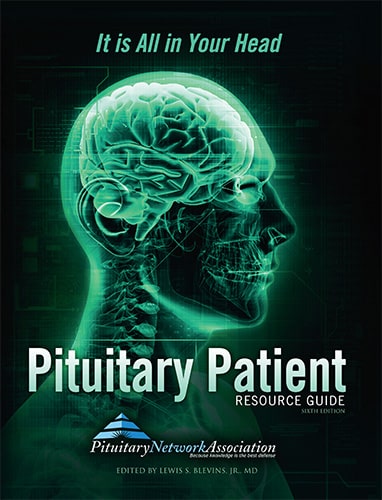
The Pituitary Patient Resource Guide Sixth Edition is now available! Be one of the first to have the most up-to-date information. The Pituitary Patient Resource Guide a one of a kind publication intended as an invaluable source of information not only for patients but also their families, physicians, and all health care providers. It contains information on symptoms, proper testing, how to get a diagnosis, and the treatment options that are available. It also includes Pituitary Network Association's patient resource listings for expert medical care.
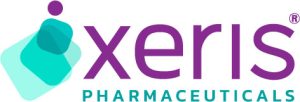
Xeris Pharmaceuticals is valued member of the PNA



